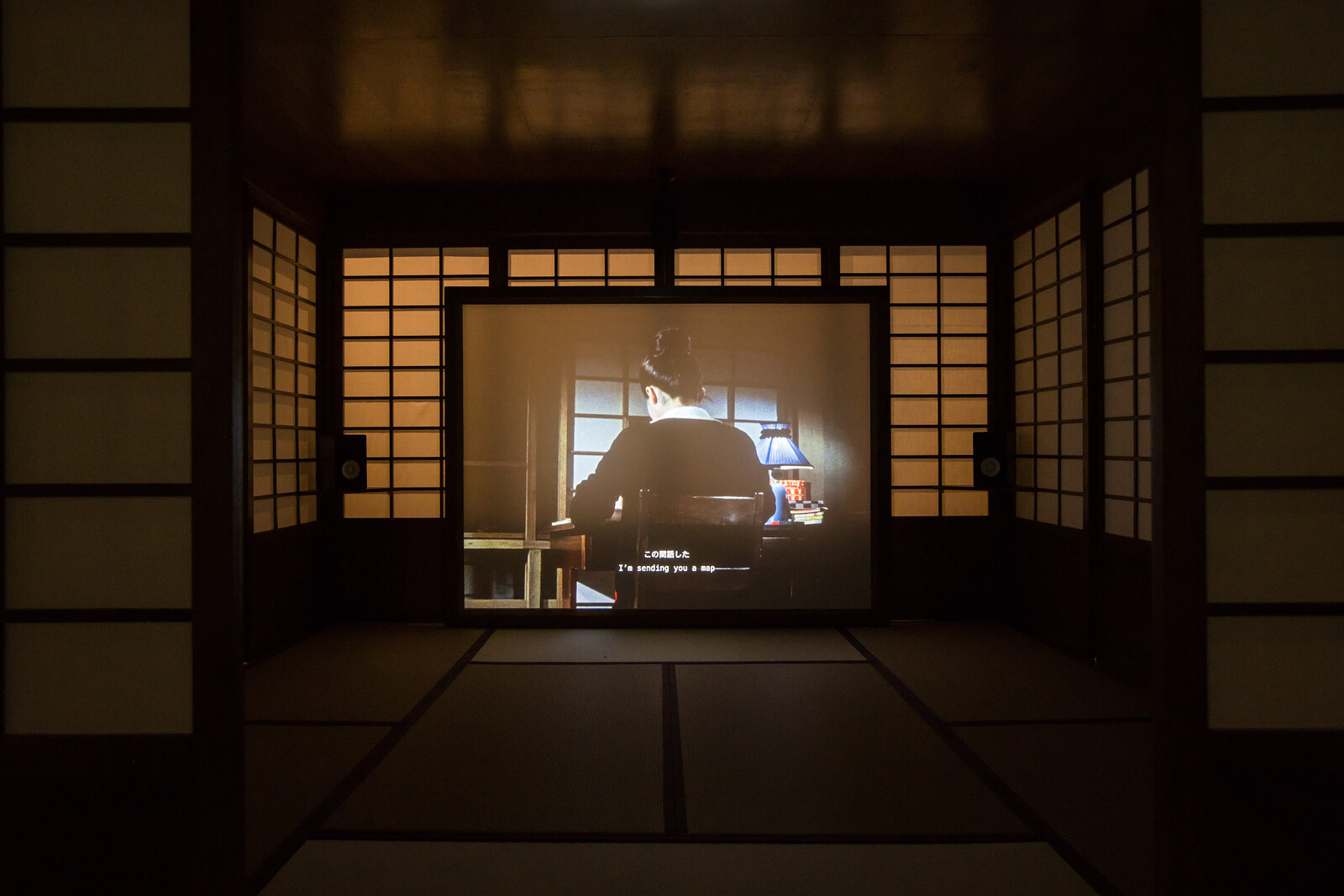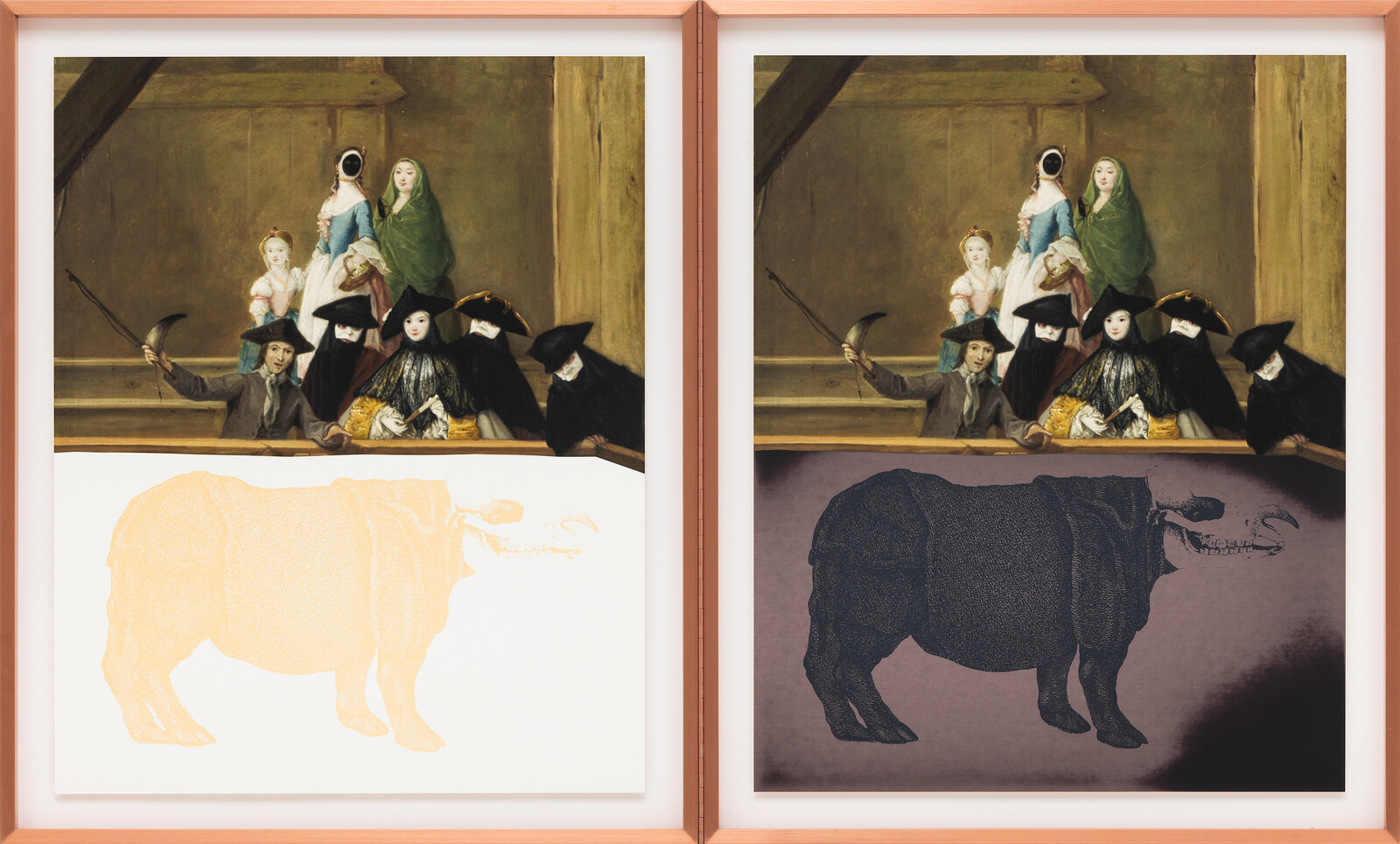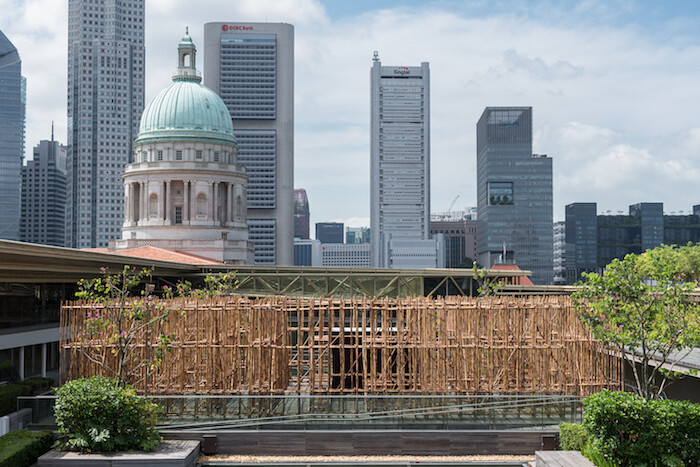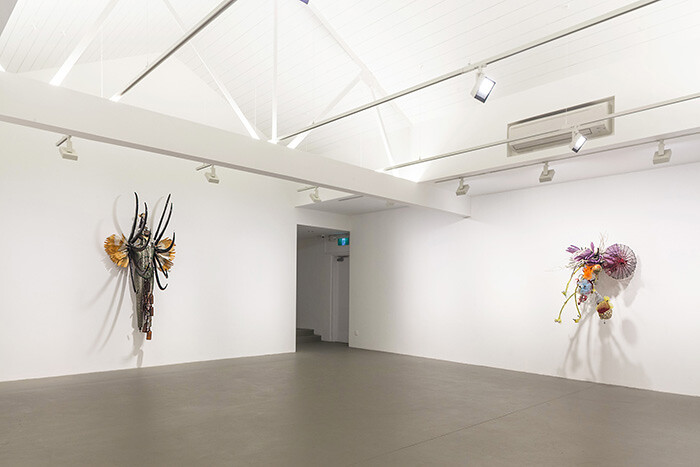Categories
Subjects
Authors
Artists
Venues
Locations
Calendar
Filter
Done
February 21, 2024 – Review
Ho Tzu Nyen’s “Time & the Tiger”
Adeline Chia

Meditations on the nature of temporality abound in Ho Tzu Nyen’s latest video work, T for Time (2023–). We have explainers on timekeeping traditions in the East and West; a vignette about a man who maintains Singapore’s oldest public clock; the origins of Greenwich Mean Time; metaphysical musings on non-linear time (“time conceived as a viscous fluid… it does not pass and has no rim… it pools”). Accompanying most of these are digital animations that sometimes illustrate the concepts—like imagery of a molting ouroboros—and visuals with less obvious connections to the theme, such as recurring scenes of political protest and incarceration. Most of the text is sung by a male narrator in seemingly improvised melodies. Content, which is shuffled by an algorithm, starts to repeat only about seventy-five edifying minutes in. I was intrigued, stimulated and entertained, but couldn’t escape the feeling of being lectured to. This has something to do with the video’s heavy reliance on text: this work narrates itself.
Ho’s self-narrating, self-theorizing, and sometimes even self-interpreting practice involves a thorough immersion in a range of research topics, resulting in a cathartic showing and telling that has become his signature style. “Time & the Tiger”, a mid-career survey …
June 13, 2023 – Review
Rirkrit Tiravanija’s “We Don’t Recognise What We Don’t See”
Christine Han

The formally diverse series of works that anchor Rirkrit Tiravanija’s new solo exhibition each highlight the accelerating inequity among living beings and propose tentative frameworks for their reconciliation. On entering the exhibition, the visitor is greeted by framed prints of five Old Master paintings which have been appropriated and adapted by Tiravanija. In twinned reproductions of Pietro Longhi’s Il rinoceronte (1751), for instance, Tiravanija has altered or partly obscured the original image of Clara—the first rhinoceros brought into Europe from Asia—as depicted in a Venetian carnival. The implication of the title (untitled, 2020 [we are not your pet], 2023) seems clear: to disrupt the idea that nature as distinct from humanity is something to be tamed and subordinated.
Then there are the mysterious, seemingly empty spaces in Jan Brueghel the Elder’s The Temptation in the Garden of Eden (ca. 1600). Where are the horses, swans, tigers, antelopes, and hares? I did as the gallery told me and shone a UV flashlight onto its surface, where now I could discern the peculiar, enigmatic shadows of departed birds (screen-printed onto the image with solar dust ink by the artist) perched on trees. They appear morbid, gentle, and undefined. Should we be thinking …
March 16, 2021 – Review
Heman Chong’s “Peace Prosperity And Friendship With All Nations”
Christine Han

“PEACE PROSPERITY AND FRIENDSHIP WITH ALL NATIONS,” declares a wall piece mounted beside the entrance to Heman Chong’s solo show at Singapore’s STPI. Written in an all-caps, dripping black font reminiscent of leaking bodily fluids and suggesting violence, the arresting phrase—which lends the exhibition its title—is lifted from a British coin minted to commemorate the UK’s formal withdrawal from the European Union on January 31, 2020. Direct and ambiguous, official and hilarious, the piece combines the playful language of conceptual art with the immediacy and seriousness of contemporary history. In doing so, it sets the tone for an exhibition that brings into focus the artist’s powerful use of appropriation, abstraction, and repetition in addressing the restrictiveness and complexity of the present.
In Call for the Dead (2020)—83 black-and-white scans of pages from the eponymous 1961 novel by John Le Carré, screen-printed on linen and hung in a grid-like formation in a long, white-walled gallery—Chong takes his experiments with text into new territory. The Cold War fantasies of the mid-century spy genre might here be read as a comment on decoloniality: the novel was written while Le Carré was working as a spy for MI6—which had a regional outpost in Singapore. …
February 23, 2018 – Review
Singapore Art Week
Kathleen Ditzig

Developed by the Singapore government in 2013 in an attempt to create hype around the fair Art Stage Singapore, Singapore Art Week (SAW) is a loose collection of events organized by museums, art spaces, and cultural producers. This year’s edition featured a series of festivals that turned the Civic District’s museums into glowing canvases for art projected on its walls and a relentless deluge of installations, performances, and exhibitions. Yet recently, news sources have focused on the decline of Art Stage as a pronouncement on the state of the arts in Singapore. Amplifying the claims of Art Stage founder Lorenzo Rudolf that the Singapore art market has stagnated and that there is a lack of domestic art production due to state censorship, the South China Post remarked that Singapore had lost its edge to Hong Kong, and the Asia Times ran the headline “Singapore Swings and Misses at the Arts.”
Is Singapore an art hub in decline? Singapore’s development of art infrastructure and support of Art Stage have been attempts to define itself as a delta to Southeast Asian art. These efforts have been successful for the most part. The National Gallery Singapore has arguably one of the best existing collections …
March 9, 2015 – Review
Rina Banerjee’s "Migration’s Breath"

In Rina Banerjee’s exhibition “Migration’s Breath,” the Indian-born, New York-based artist’s sculptures are like mystical creatures borne out of an enticing mixture of natural and commercial detritus—plastic, cowry shells, brightly colored ribbons, light bulbs, doll parts, feathers, rope. Her works on paper create contexts for the gods, monsters, and mortals that Banerjee depicts, giving glimpses into their stories. While the works evoke traditional narratives and fairytales, the materials themselves reflect the everything-at-once phenomena of Amazon, Alibaba, and Etsy. Banerjee sources her materials online before working with fabricators to produce armatures that she then populates with the diverse array of materials that give her figures life and energy.
The Singapore outpost of Ota Fine Art is located at Gillman Barracks, a cluster of nearly 20 art galleries—including the recently opened Centre for Contemporary Art—in one of the British army’s former colonial properties. There is a synergy between the commercial progression of the residue of British imperialism that codes this newly formed art precinct and the compelling, intermingling postcolonial narratives and motifs of Banerjee’s exhibition, drawn from the artist’s own immersion in West Bengali, Indian, and American cultures.
“Migration’s Breath” is presented in a gallery partitioned into two sections, each anchored by an artwork …
April 18, 2014 – Review
Heman Chong’s “Of Indeterminate Time Or Occurrence”
Michael Lee

With his latest deliberation on narrative, text, and the future, Heman Chong offers a handsome presentation of paintings, text pieces, and a found book in his new solo exhibition “Of Indeterminate Time Or Occurrence” at Singapore’s FOST Gallery. Greeting you on one wall is a series of small paintings—organized in a three-row, eleven-column grid—and opposite from them, like a kind of déjà vu, is a second set of 33 paintings. Left empty and unlit, the long space between the two walls emphasizes the paintings’ sheer numbers, technique, and execution. With each of Chong’s canvases being a viable abstract painting, and in light of his competent painterly gestures, a question arises: How does he reconcile his research-based practice, which values idea over form, with his painterly brush? In other words, how does the artist manage to have it both ways?
In this exhibition, Chong intersperses paintings from the “Cover (Versions)” series (2009–ongoing)—each one featuring a book title and author’s name against an abstract background, much like a book cover—among “wordless” canvases from his newer “Things That Remain Unwritten” series (2013–ongoing). Serving as fillers or breathers, the latter canvases offer relief from the otherwise didactic text panels on view, affording us a way …
